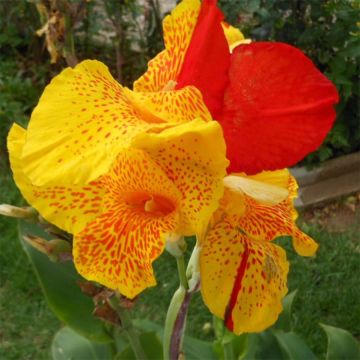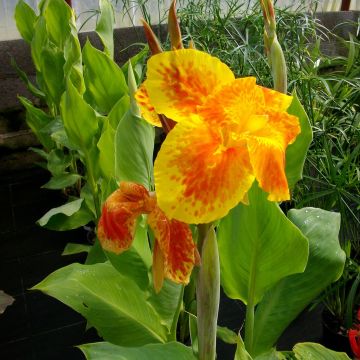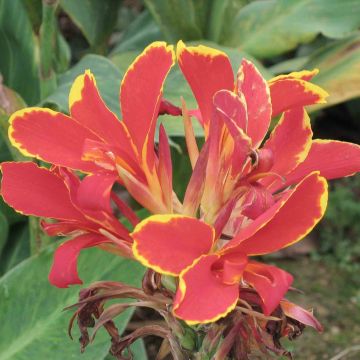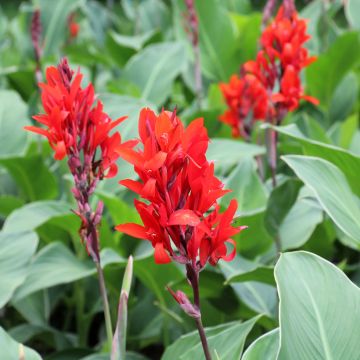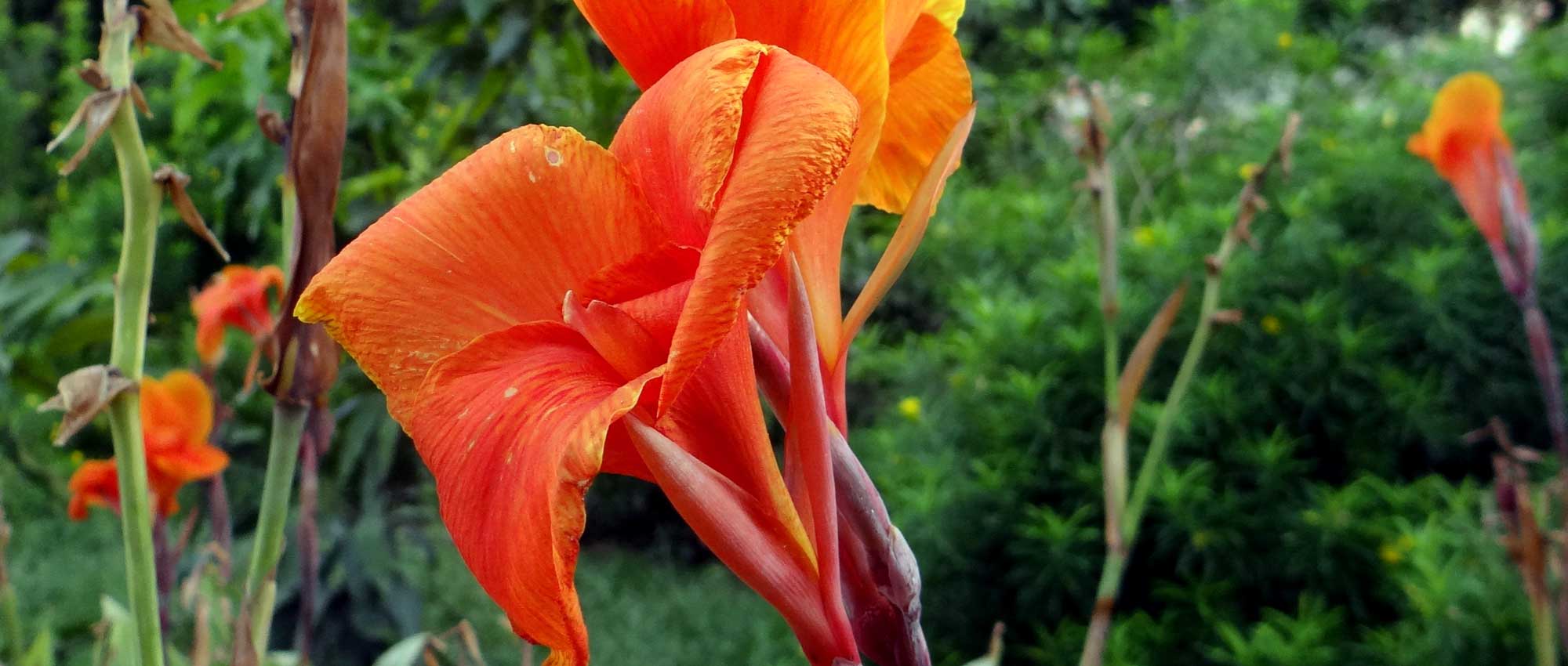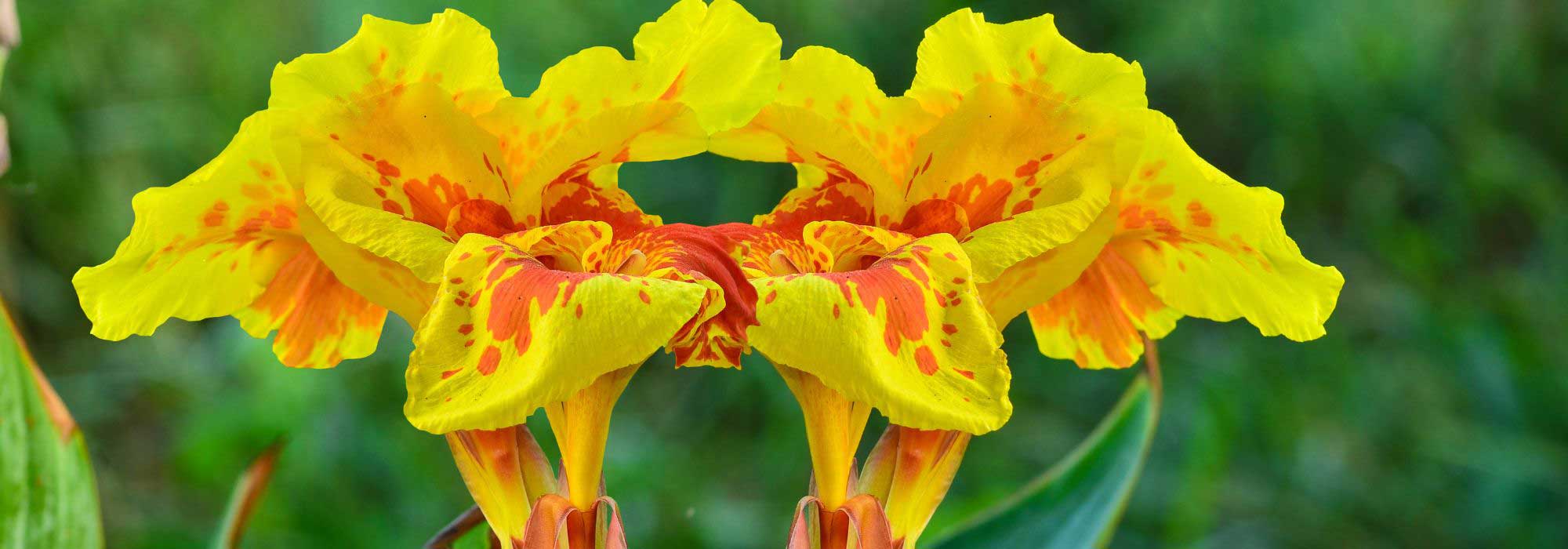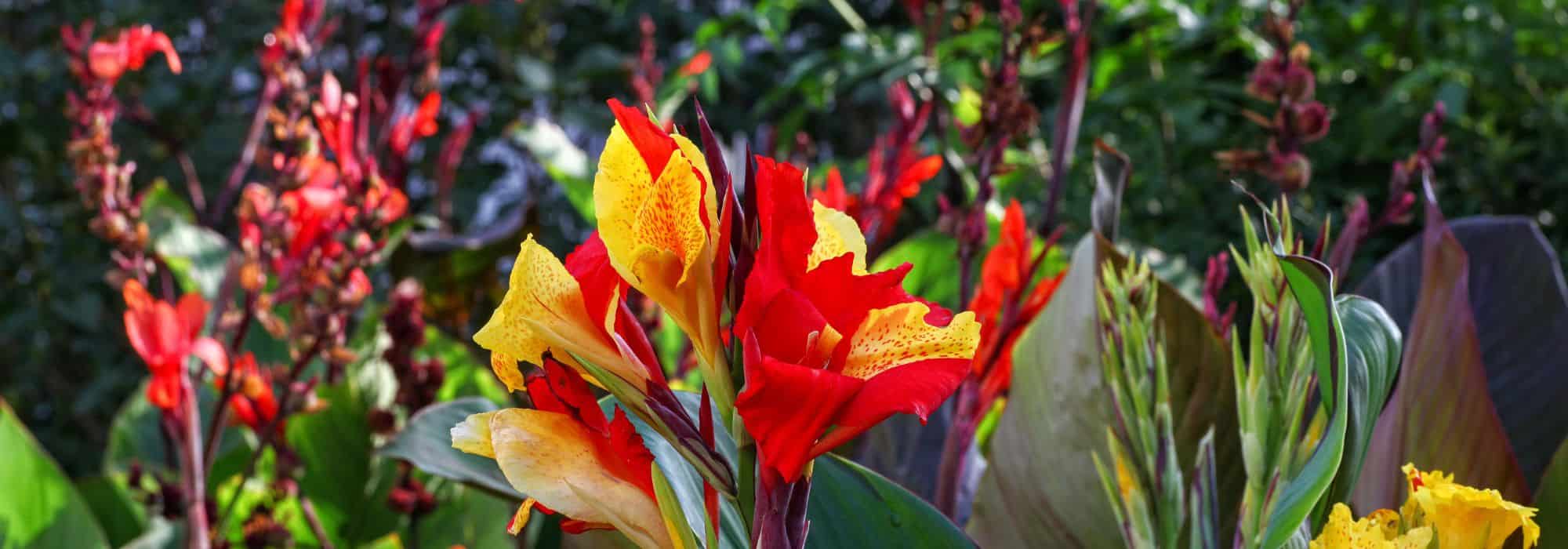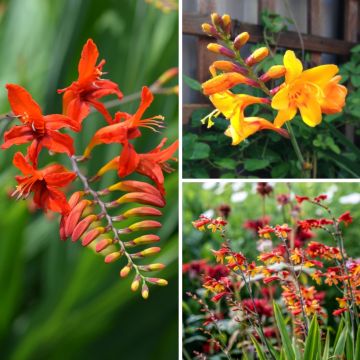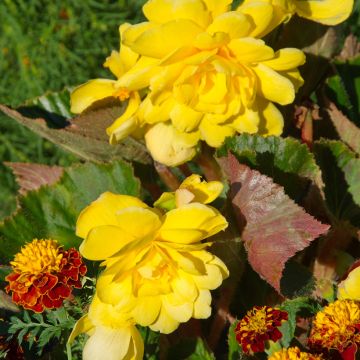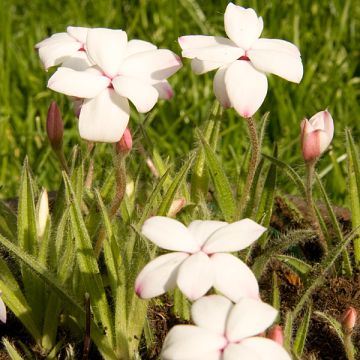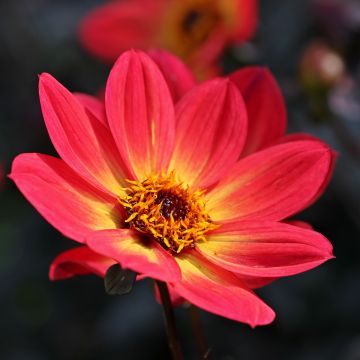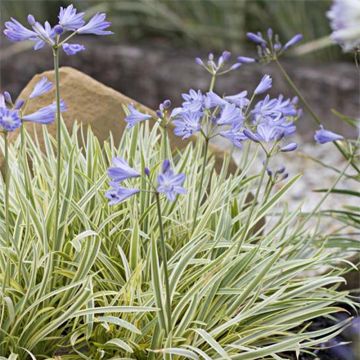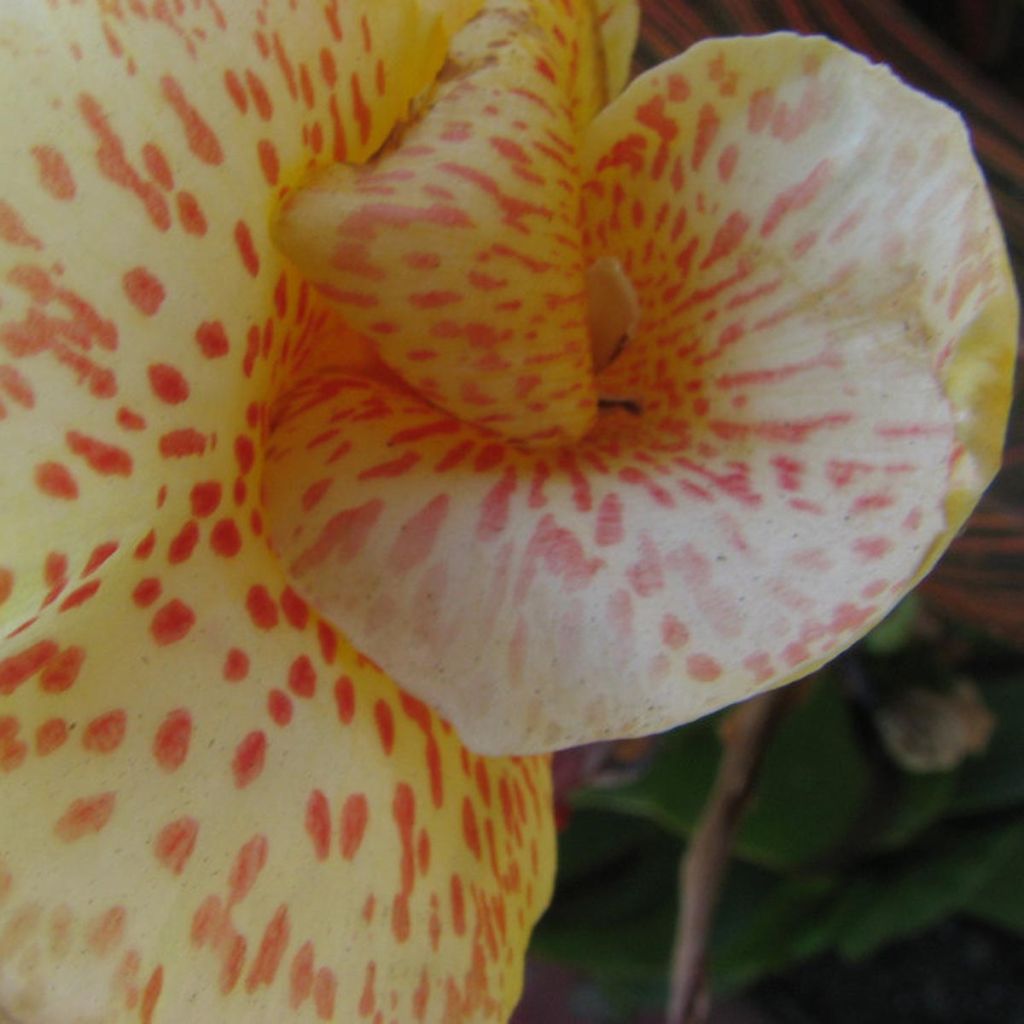

Canna Confetti - Balisier crème picté de rose
Canna Confetti - Indian shot
Canna x indica Confetti
Indian shot, Canna, Cann Lily, African Arrowroot, Edible Canna, Purple Arrowroot, Sierra Leone Arrowroot
The 3 canna rhizomes I received appear to be healthy. I have planted them and am waiting to see their growth...
Thierry, 06/06/2019
Special offer!
Receive a €20 voucher for any order over €90 (excluding delivery costs, credit notes, and plastic-free options)!
1- Add your favorite plants to your cart.
2- Once you have reached €90, confirm your order (you can even choose the delivery date!).
3- As soon as your order is shipped, you will receive an email containing your voucher code, valid for 3 months (90 days).
Your voucher is unique and can only be used once, for any order with a minimum value of €20, excluding delivery costs.
Can be combined with other current offers, non-divisible and non-refundable.
Why not try an alternative variety in stock?
View all →This plant carries a 6 months recovery warranty
More information
We guarantee the quality of our plants for a full growing cycle, and will replace at our expense any plant that fails to recover under normal climatic and planting conditions.
Would this plant suit my garden?
Set up your Plantfit profile →
Description
Canna 'Confetti' is a dwarf variety, ideal for patios and balconies. From July to the first frosts, this rhizomatous perennial bears an astonishing flowering that is as delicious and refined as that of an Asian lily. Its round flowers display a cream or pale-yellow background, beautifully speckled with candy pink. The blooms are tightly packed on stout spikes. Its lush and healthy dark green foliage is similar to that of a banana plant. It is tolerant to drought, but will provide more beautiful blooms if planted in moist but well-drained soil, in full sun or partial shade.
Canna 'Confetti' is a recent horticultural creation resulting from, among others, C. edulis or C. indica, a large perennial native to tropical and subtropical regions of South America, and C. flaccida, with wider flowers and spectacular variegation, native to wet areas of the southeastern United States, from Texas to South Carolina. This plant belongs to the Cannaceae family, and to the same group as gingers and banana plants. In spring, its thick and knotted rhizome develops a dense clump measuring at least 40cm (16in), composed of numerous large entire leaves whose sheathing base forms a false stem. The thick and dark green leaves resemble those of banana plants. From July to the first frosts, thin floral stalks, 70cm (28in) tall, appear in the centre of these apparent stems. The asymmetric flowers are grouped in dense spikes. They are round, composed of wide petals, beautifully speckled with pink on a cream to pale-yellow background. The heart of the flower is warmed by a more golden tone. At the end of the season, the flowers are followed by curious round fruits covered with thorns. These green capsules turn purple and then brown, and contain very hard black seeds.
Hybrid cannas are majestic and colourful plants, ideal for adding spice to the back of flower beds or planted in large groups on a lawn. Their cultivation is accessible to all. Consider planting them in dense flower beds of about ten bulbs of the same variety, or by mixing green and purple foliage. Canna 'Confetti' can be used to create stunning exotic-looking container displays, alongside agapanthus, amaranths, and cosmos. It forms a beautiful combination with a banana plant or bamboo. Grow this plant like a dahlia. Dig up the rhizomes before the frost arrives and replant them in spring.
Plant habit
Flowering
Foliage
Botanical data
Canna
x indica
Confetti
Cannaceae
Indian shot, Canna, Cann Lily, African Arrowroot, Edible Canna, Purple Arrowroot, Sierra Leone Arrowroot
Cultivar or hybrid
Other Cannas
View all →Planting and care
Plant the bulbs after the last frosts. The soil should be moist but well-drained (if necessary, lighten your soil with turf or sand). Space them 40cm (16in) apart. Cover with 5cm (2in) of soil. Apply organic fertiliser at planting and at least once a month. Water regularly so that the soil never completely dries out. Its flowering will be more beautiful if it is planted in partial shade.
Canna 'Confetti' does not like cold weather. It must be protected from frost during winter. Dig up the rhizomes and keep them dry and cool. You can place them in turf, for example.
You can speed up their cycle by planting them in pots under frost-free shelter as early as February, and then transplanting them to the garden in warmer weather.
Planting period
Intended location
Care
Planting & care advice
-
, onOrder confirmed
Reply from on Promesse de fleurs
Similar products
Haven't found what you were looking for?
Hardiness is the lowest winter temperature a plant can endure without suffering serious damage or even dying. However, hardiness is affected by location (a sheltered area, such as a patio), protection (winter cover) and soil type (hardiness is improved by well-drained soil).

Photo Sharing Terms & Conditions
In order to encourage gardeners to interact and share their experiences, Promesse de fleurs offers various media enabling content to be uploaded onto its Site - in particular via the ‘Photo sharing’ module.
The User agrees to refrain from:
- Posting any content that is illegal, prejudicial, insulting, racist, inciteful to hatred, revisionist, contrary to public decency, that infringes on privacy or on the privacy rights of third parties, in particular the publicity rights of persons and goods, intellectual property rights, or the right to privacy.
- Submitting content on behalf of a third party;
- Impersonate the identity of a third party and/or publish any personal information about a third party;
In general, the User undertakes to refrain from any unethical behaviour.
All Content (in particular text, comments, files, images, photos, videos, creative works, etc.), which may be subject to property or intellectual property rights, image or other private rights, shall remain the property of the User, subject to the limited rights granted by the terms of the licence granted by Promesse de fleurs as stated below. Users are at liberty to publish or not to publish such Content on the Site, notably via the ‘Photo Sharing’ facility, and accept that this Content shall be made public and freely accessible, notably on the Internet.
Users further acknowledge, undertake to have ,and guarantee that they hold all necessary rights and permissions to publish such material on the Site, in particular with regard to the legislation in force pertaining to any privacy, property, intellectual property, image, or contractual rights, or rights of any other nature. By publishing such Content on the Site, Users acknowledge accepting full liability as publishers of the Content within the meaning of the law, and grant Promesse de fleurs, free of charge, an inclusive, worldwide licence for the said Content for the entire duration of its publication, including all reproduction, representation, up/downloading, displaying, performing, transmission, and storage rights.
Users also grant permission for their name to be linked to the Content and accept that this link may not always be made available.
By engaging in posting material, Users consent to their Content becoming automatically accessible on the Internet, in particular on other sites and/or blogs and/or web pages of the Promesse de fleurs site, including in particular social pages and the Promesse de fleurs catalogue.
Users may secure the removal of entrusted content free of charge by issuing a simple request via our contact form.
The flowering period indicated on our website applies to countries and regions located in USDA zone 8 (France, the United Kingdom, Ireland, the Netherlands, etc.)
It will vary according to where you live:
- In zones 9 to 10 (Italy, Spain, Greece, etc.), flowering will occur about 2 to 4 weeks earlier.
- In zones 6 to 7 (Germany, Poland, Slovenia, and lower mountainous regions), flowering will be delayed by 2 to 3 weeks.
- In zone 5 (Central Europe, Scandinavia), blooming will be delayed by 3 to 5 weeks.
In temperate climates, pruning of spring-flowering shrubs (forsythia, spireas, etc.) should be done just after flowering.
Pruning of summer-flowering shrubs (Indian Lilac, Perovskia, etc.) can be done in winter or spring.
In cold regions as well as with frost-sensitive plants, avoid pruning too early when severe frosts may still occur.
The planting period indicated on our website applies to countries and regions located in USDA zone 8 (France, United Kingdom, Ireland, Netherlands).
It will vary according to where you live:
- In Mediterranean zones (Marseille, Madrid, Milan, etc.), autumn and winter are the best planting periods.
- In continental zones (Strasbourg, Munich, Vienna, etc.), delay planting by 2 to 3 weeks in spring and bring it forward by 2 to 4 weeks in autumn.
- In mountainous regions (the Alps, Pyrenees, Carpathians, etc.), it is best to plant in late spring (May-June) or late summer (August-September).
The harvesting period indicated on our website applies to countries and regions in USDA zone 8 (France, England, Ireland, the Netherlands).
In colder areas (Scandinavia, Poland, Austria...) fruit and vegetable harvests are likely to be delayed by 3-4 weeks.
In warmer areas (Italy, Spain, Greece, etc.), harvesting will probably take place earlier, depending on weather conditions.
The sowing periods indicated on our website apply to countries and regions within USDA Zone 8 (France, UK, Ireland, Netherlands).
In colder areas (Scandinavia, Poland, Austria...), delay any outdoor sowing by 3-4 weeks, or sow under glass.
In warmer climes (Italy, Spain, Greece, etc.), bring outdoor sowing forward by a few weeks.






























